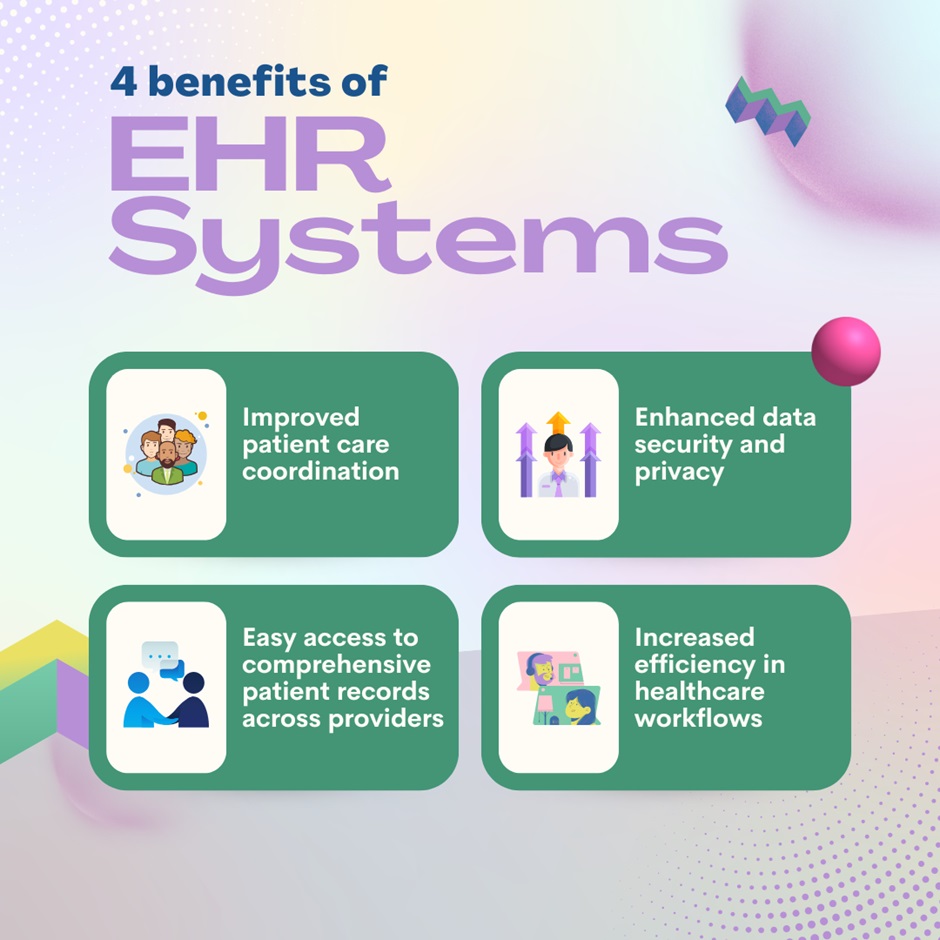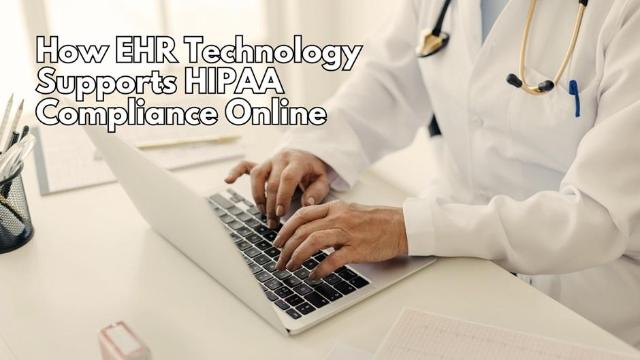How EHR Technology Supports HIPAA Compliance Online
Electronic Health Records (EHRs) have become an integral part of modern healthcare, transforming how personal health information is stored, shared, and accessed. HIPAA, the Health Insurance Portability and Accountability Act, mandates the careful management of patient data. As we increasingly rely on digital platforms, EHR technology plays a fundamental role in ensuring HIPAA compliance.
The introduction of EHR technology offers greater efficiency and care coordination while protecting information regarding patients in a manner consistent with the HIPAA guidelines. This article explores how EHR systems ensure HIPAA compliance, focusing on features that protect patient data online and why this technology is vital for upholding legal and ethical standards in healthcare.
What are EHRs?
While EHRs and Electronic Medical Records (EMRs) are often confused, they have distinct differences. The main difference between an EHR and EMR lies in the scope of use: EMRs are typically used within a single healthcare provider’s office, while EHRs are designed to be shared across multiple healthcare settings, facilitating comprehensive care.
It is crucial to understand the basic concepts of EHRs to understand their potential in the maintenance of HIPAA compliance. An EHR is an electronic record of a patient's medical history, including all diagnoses, treatments, medications, and lab results.
Authorized caregivers from different care settings can access patients' EHRs, facilitating improved coordination of care. This is one of the reasons why EHRs are highly valued: designed to securely share patient information, they thereby play a core role in ensuring that patient data is handled responsibly and in compliance with current regulatory standards.
Key Characteristics of EHRs
- EHRs securely store and transfer health-related data
- Authorized professionals have immediate access to the necessary patient information
- Inbuilt data integrity and accuracy tools
- Trend and progress tracking of patients in various settings of care
How EHRs Support HIPAA Compliance
EHR technology offers a number of key features, which help the healthcare provider in complying with HIPAA. They ensure that sensitive information is well-protected against unauthorized access, breach, or misuse by ensuring that patient data is securely managed. Here are some ways EHRs support HIPAA compliance:
1. Encryption
EHR systems include encryption as a standard security measure. Encrypted data is unreadable and inaccessible to unauthorized individuals, so in the event of a breach, it remains secure against malicious use. The encrypted data will remain indecipherable because only the appropriate decryption key can tell its meaning, a critical factor in ensuring confidentiality and compliance with HIPAA in terms of patient privacy requirements.
2. Access Controls
To safeguard patient information under HIPAA, IT support in Mooresville recommends implementing access controls that minimize the viewing and editing of patient data. EHR systems provide the means for administrators to organize user roles with permissions so access can only be granted to specific information, reducing the risk of unauthorized views and ensuring that this sensitive data is only handled by those who need to view it.
3. Audit Trails
EHRs support detailed audit trails about who accessed a patient's data when they accessed it, and what action or actions occurred. These logs are very useful to determine any malicious activity and hold people liable. In case of a security breach or HIPAA violation, audit trails will provide an easy record of who was involved, and healthcare organizations can quickly understand the root cause of the problem.
4. Secure Communication
Many EHRs offer messaging services: secure means of communication of sensitive patient information between healthcare providers. This guarantees that such data is encrypted and is allowed to the recipient only through some permission restriction. The data, therefore, never needs to pass through insecure communications such as email or text messaging.
Protection of Patient Data in an Online Environment
With people depending increasingly on online-based services and applications, healthcare providers need to take particular initiatives regarding the safety of information about their patients.
EHR technology safeguards against all the dangers of online data storage as well as online transfer using effective security measures. However, healthcare organizations must ensure that these systems are implemented efficiently and comply with HIPAA regulations.
Tips for the Protection of Patient Data Online
- Update your EHR systems periodically to strengthen them against security vulnerabilities.
- Train employees on HIPAA compliance and the proper use of EHR systems
- Implement multi-factor authentication to strengthen login security
- Conduct regular security audits for emerging risks

Integration With Other Technologies
EHR systems can be integrated with more technologies to enhance the quality of care and safeguarding of patients' details. For example, EHRs can integrate with telemedicine software to ensure the safe transfer of patient information during virtual physician visits. This is vital since telemedicine is becoming more common in health care. The safety attributes of EHRs thus safeguard sensitive information on all digital platforms.
Benefits of EHR Integration
- Better coordination of in-person and virtual visit care
- Safe data for multiple platforms
- Effective communication with patients and record-keeping
Ensuring Compliance through Regular Audits
Healthcare organizations maintain HIPAA compliance by constant auditing of EHR systems and processes. Auditing informs management of potential weaknesses in the system and ensures that the security gap is promptly addressed. EHRs with a built-in audit trail ease the process of compliance monitoring, tracking security incidents, and taking corrective actions when necessary.
Steps to Conduct the EHR Audit
- Review user access logs for data on patient information to ensure that only authorized staff is accessing the data.
- Review server and application security logs for login failures or activity that might point to unauthorized access to the system.
- Review encryption and data protection protocols
- Verify that all employees are trained on HIPAA compliance and correct use of EHRs
Reducing Risks with Data Encryption
Perhaps the most crucial aspect of EHR systems is the use of encryption to protect a patient's information. This encryption translates the patient's information into code, which can only be accessed with a decryption key. This ensures that if patient data is intercepted during an online transfer, unauthorized users will not be able to read or access it. Using an EHR system would apply both to data being stored on servers and to data transmitted between healthcare providers, thus reducing HIPAA violations even further.
Benefits of Encryption in EHR Systems
- It safeguards the patient's data from unauthorized access.
- Ensures that the data is safe during online transactions
- It enables easy and correct compliance with HIPAA guidelines
Access Control to Sensitive Information
The Hippa requires that the patient's confidential information be accessed only with limited permissions. EHR systems are also designed to follow this principle. Administrators can implement role-based permissions so authorized personnel may view or modify appropriate information only. This ensures patient privacy while reducing the risk of data breaches.
Data access is a core component of HIPAA compliance. Through EHR technology, it is relatively easy to institute restrictions for healthcare organizations.
How EHRs Assist in Controlling Access
- Role-based access control of sensitive patient information
- Detailed audit trails that track access and use of data
- Multi-factor authentication to heighten login security
FAQs
- What is the primary difference between an EHR and an EMR?
The main difference is that EMRs are usually implemented within a single healthcare provider's office, while EHRs are designed to allow for sharing of patient data among various settings of healthcare.
- How does EHR technology enable HIPAA compliance?
EHR technology enables HIPAA compliance by having characteristics such as encryption, access controls, audit trails, and secure communication which ensure the protection of the patient's information against unauthorized access.
- What actions can healthcare providers undertake to have their EHRs compliant with the HIPAA?
Healthcare providers should always audit their security practices, enforce controls for access, ensure the employees are educated on guidelines, and multi-factor authentication to ensure the best system security.
Conclusion
EHR technology is critical for HIPAA compliance because the tools are basically what healthcare providers need to secure patients' information in this digital world. With features such as encryption, access controls, audit trails, and secure communication through the EHR, sensitive information is protected while still enabling healthcare professionals to give high-quality care.
As healthcare continues to evolve, it is still necessary to understand the importance of HIPAA compliance and how EHR technology will only continue to play an increasingly more important role in modern healthcare practice. Regular audits, security updates, and proper staff training ensure that EHR systems remain secure and compliant, keeping all patient information protected.

